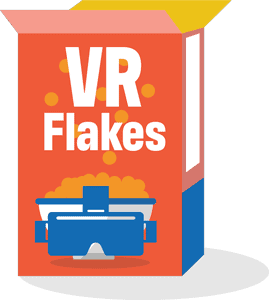
Rendering Physical Sensations in Virtual Reality through Chemical Haptics
Is the virtual world ready for this? Today, we've witnessed great advancements in the VR world, bringing things as near to realism as possible. Haptics technology has progressed significantly. Now, simulating physical sensations through chemical triggers is possible. Let's have a look at the various types of simulated sensations that are now available. Find out how the new chemical haptics work. Some may think this is a cool idea, but has it gone too far?
Haptic technologies
The use of haptic technology has been existing since the 1970s. The most widely used integration we know today is through haptic devices such as joysticks, game controllers, and steering wheels.
Haptic technology is simply known as 3D touch or kinaesthetic communication. The word haptic is derived from the Greek word that means tactile or to touch. Research and developments in haptic technology revolve around how human sensory works in human computer interaction. There are numerous applications of technology, and it is being more widely used than you know. It is also being used on laptop touchpads and mobile phones.
Haptic devices in virtual reality
This technology allows VR gamers to experience haptic feedback and other integrations that enhance the overall enjoyment of the game. It delivers a more immersive experience in virtual reality. However, it has always been employed in VR to fit seamlessly with the whole experience.
Now, haptic technology is being developed for VR to produce not just immersive but also realistic experiences. New haptic technology was created for novel physical experiences that have yet to be encountered in VR.
Unique physical sensations through chemical haptics
VR is creating a new world of sights and sounds motivated by the vision of the metaverse for all. We expect to be surprised, and astonished by amazing new concepts. And to feel heat, cold, and pain in VR is something entirely new. But it is in reality a new development in haptics technology.
Chemical haptics is a device that was created by the Human Computer Integration Lab at the University of Chicago. The device is self-contained and wearable. It is an assembly of silicon patches and micropumps. Each of these delivers chemicals onto human skin.
Five chemicals are rendering five unique physical sensations. They are as follows:
- Menthol = cold sensation
- Capsaicin = heat sensation
- Sanshool = tingling sensation
- Lidocaine = numbing sensation
- Cinnamaldehyde = stinging sensation
Chemical haptics devices can be worn in any part of the body where there is contact with the user’s skin. All chemicals should be safe for human skin. Read more here.
This new technology has elicited a variety of reactions. Skin irritation, according to some, might be an issue. Others are eager to learn more about the technology's applications that go beyond the apparent. Is it worthwhile to make it part of our daily gaming or something else? What we do know is that technology evolves into a variety of applications from a single point of origin. It may have the potential to generate fresh ideas that will become a part of the metaverse's future.



